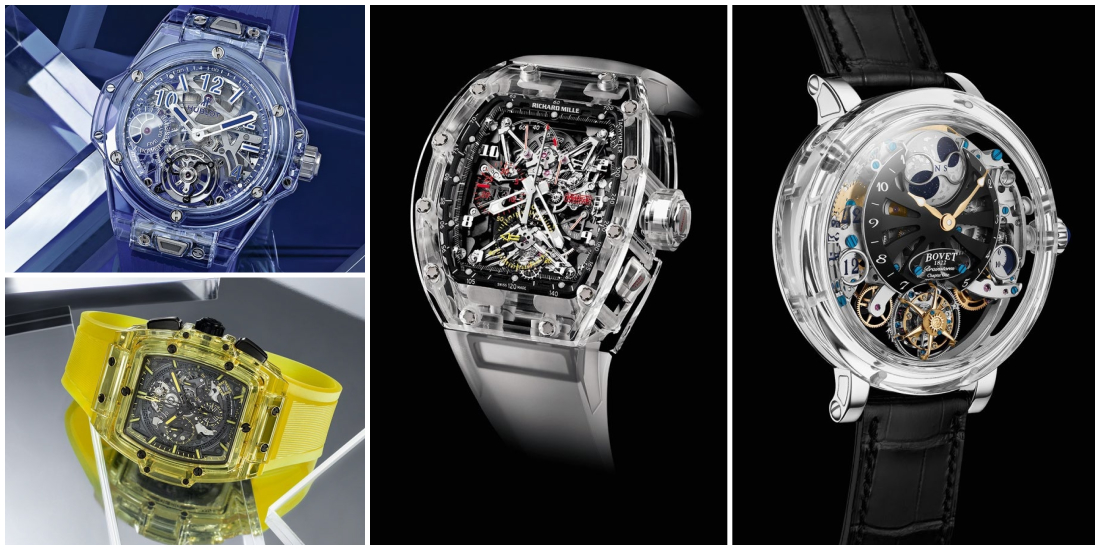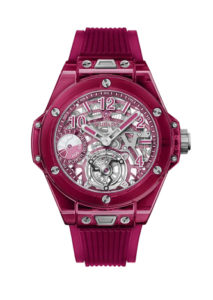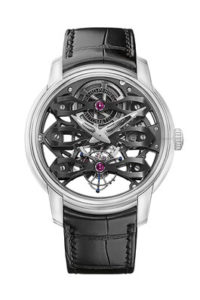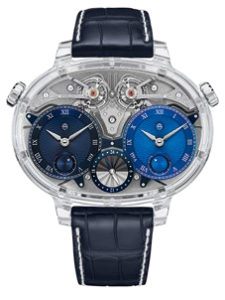
More than ever, watches with sapphire cases represent peak expertise within the watchmaking industry. Not only because of their prices, but above all because they require a perfectly designed Watch.

Whether as a media stunt, to generate buzz or simply gracing an extraordinary watch, a transparent sapphire case represents a powerful tool. However, times are changing and these models no longer have the same massive impact. Admittedly, a seven-digit price-tag is still a way of creating a stir as well as a powerful visual impression, but this approach is no longer the norm. However, while carving the flanks, bezel, lugs and bezel from corundum crystal is no longer exorbitantly expensive, this remains an exceptional phenomenon.
 HARD
HARD
Sapphire remains the hardest material with which watchmaking is capable of working. While the material itself does not come cheap, it is a synthetic product – corundum crystal – created in laboratory conditions and therefore relatively commonplace. It has witnessed significant investment and progress. On a market buoyed by its use for scratch-resistant crystals, transparent backs, followed by glass boxes and more generally the expansion of high-end watchmaking, there are now many suppliers of sapphire components. They know how to cut, polish and drill it in all three dimensions. These operations, which are essential for use in watch decoration, require several dozen days of machining. Not to mention the rapid wear and tear of the cutting tools. The more complex and curved a component, the more time and money must be spent to achieve it. The price of sapphire therefore drives up the price of the watches it adorns.
 REVEALING
REVEALING
This is not only because sapphire is difficult to work with. It is also that by its very nature, it reveals everything, and is therefore particularly unforgiving of any potential flaws. Whether the sides, back or face, this material implies that nothing remains hidden, especially since the movements that fill these mineral chambers are skeletonized. They must therefore feature impeccable surface conditions on all sides, which explains why transparency is part of an entire approach. It was the maturity of openworked movements suspended in cases ‘full of emptiness’ that led to the emergence of sapphire. Even today, brands are slowly progressing towards this absolute transparency, in a process of design maturation. Girard-Perregaux’s Quasar began as the Neo Tourbillon with Three Bridges, before appearing in a skeleton version with an openworked mainplate, after which a sapphire body was added, replacing titanium.
PROMISING
Hublot has decided to issue such models as recurring series. To date, 23 different models have been the object of a limited, often colorful production. The latest models were presented at the SIHH : a Spirit of Big Bang in bright yellow or indigo blue, and Big Bang Tourbillon Power Reserve 5 Days in red or blue. Yet the strength of the brand has been to offer different price levels according to the degree of sophistication of its designs. The entry-level-priced models have attracted a new clientele to this niche. The SIHH 2019 and its peripheral exhibitions offered stronger than ever proof that sapphire cases are on the rise. At Franck Muller, Bovet, Speake Marin and Armin Strom, watches that are not necessarily overpriced have appeared in a wide range of styles.
EXTREME
One must however give credit where credit is due. Richard Mille was the first to offer an all-sapphire watch in 2012, the RM 056 Felipe Massa. It was followed by two other models, in extremely small and exorbitantly expensive series, which is entirely logical within the brand’s universe. Then came a ladies’ version, the RM 07-02 Pink Lady Sapphire, which introduced pink-tinted sapphire. Since then, the brand has taken a break, creating a void into which a dozen brands have rushed, much to the delight of the public.
One thing I noticed at the SIHH this year is that sapphire cases are getting even bigger and taking on even more unusual shapes. The sapphire case for the Armin Strom Dual Time Resonance that David includes in his article (and which Timmy Tan included in his top five complicated watches from the SIHH on WorldTempus – click on the QR code below to read his article), for example, takes the width of sapphire cases to a new extreme. It’s also a great showcase for Saphirwerk, the Swiss company that makes its debut in watch case production with the Armin Strom Dual Time Resonance. Bovet also introduced its first sapphire case in its highly complicated “writing desk” shape, which is curved and angled towards the wearer. Additional metal supports and metal lugs were required on this case for technical reasons, which makes me wonder whether we are reaching the limits of the use of sapphire.
PAUL O’NEIL
Chief Editor of WorldTempus.com






